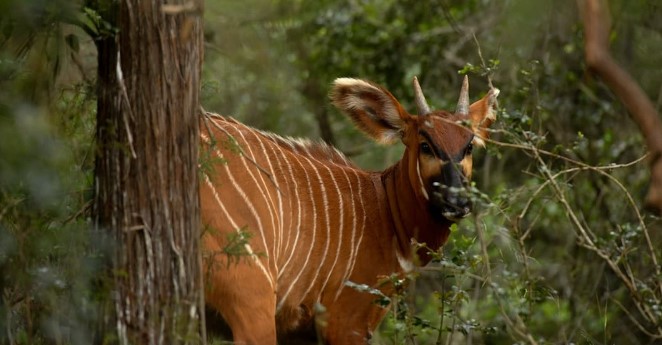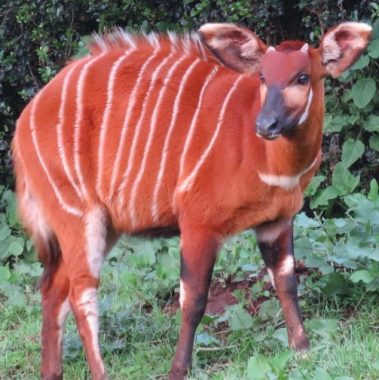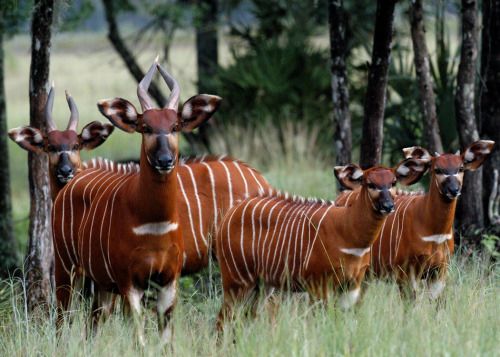Kenya has made tremendous efforts to save the critically endangered mountain bongos from extinction.
In the latest move, the US airlifted 17 rare antelope species to Kenya on Sunday, February 23, 2025, and were received by Tourism Cabinet Secretary Rebecca Miano.
“Their return is a powerful step in our mission to restore and protect Kenya’s rich biodiversity,” CS Miano stated.
Mountain Bongo
According to the Kenya Wildlife Services (KWS), only 100 of these elusive antelope remain in the wild, and can only be found in four separate montane forests at Mount Kenya, Eburu Forest, the Aberdares, and Mau Complex.
These rare species are included in the International Union for Conservation of Nature (IUCN) red list due to the fear of extinction.

Mountain bongo populations declined due to habitat loss, hunting and disease, and now persist in such small numbers that they are unlikely to survive in the long term without assistance.
“Did you know that the Mountain Bongo is a critically endangered antelope whose population has drastically declined from approximately 500 individuals in the 1970s to fewer than 100 in the wild today in Kenya?
“This decline is primarily due to habitat loss, poaching, illegal activities, disease, and small fragmented populations, threatening the survival of this rare species,” KWS stated.

This rare breed is the largest of the forest antelopes, with males weighing as much as 400 kg and reaching a shoulder height of up to 128 cm.
Its long, spiralled horns and its vibrant, chestnut-red coat adorned with contrasting white stripes and black markings make it a striking sight to behold.
Their gestation period is 270 days and females breed up to 16 years of life. It is very rare for them to give birth to twins.
Bongo wallow frequently in the mud and afterwards rub mud on trees. They have a wide range of vocalisation including grunts, snorts and clicking sounds.
Various organisations have launched conservation initiatives aimed at saving this critically endangered species from extinction in the country.










